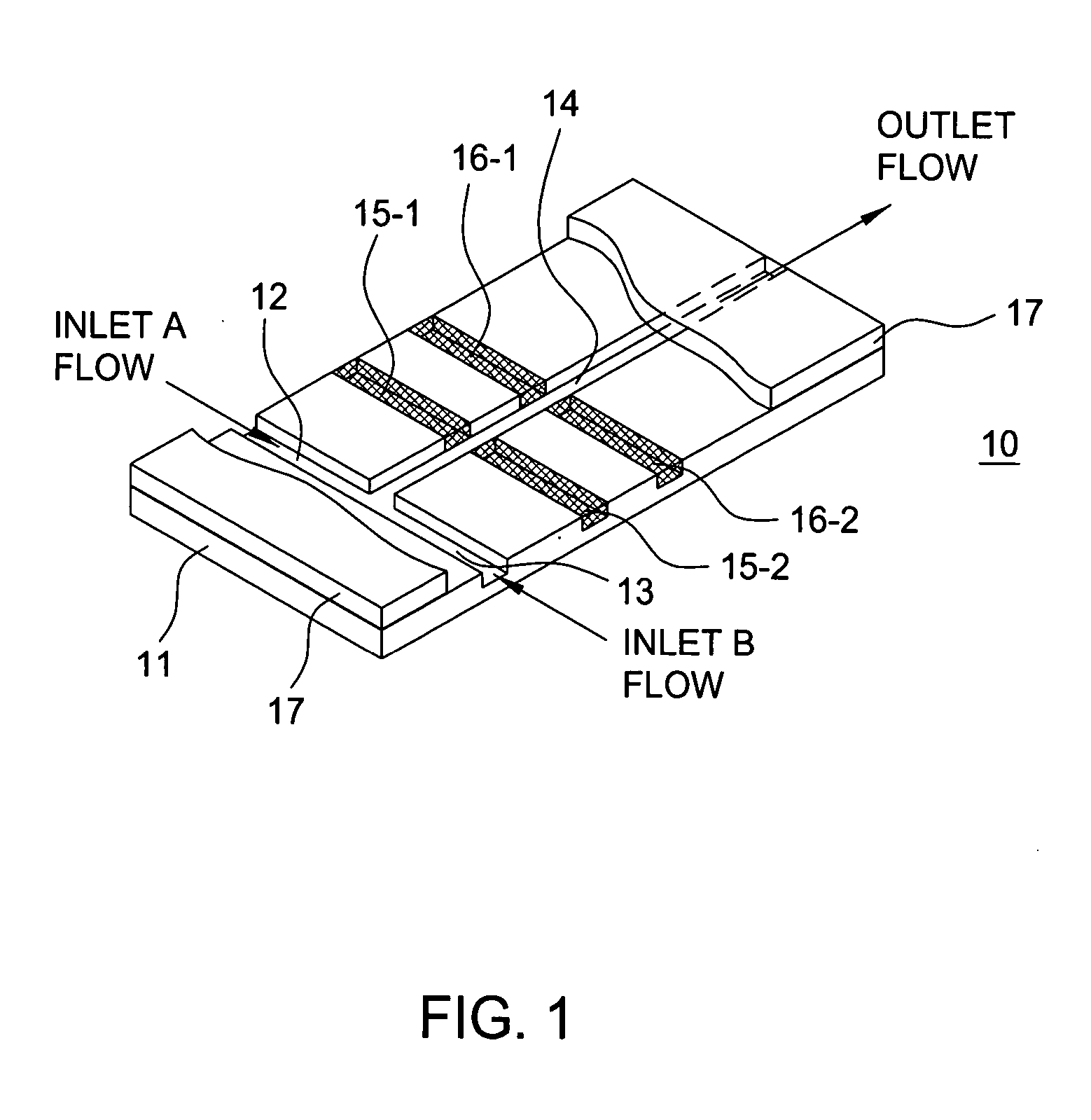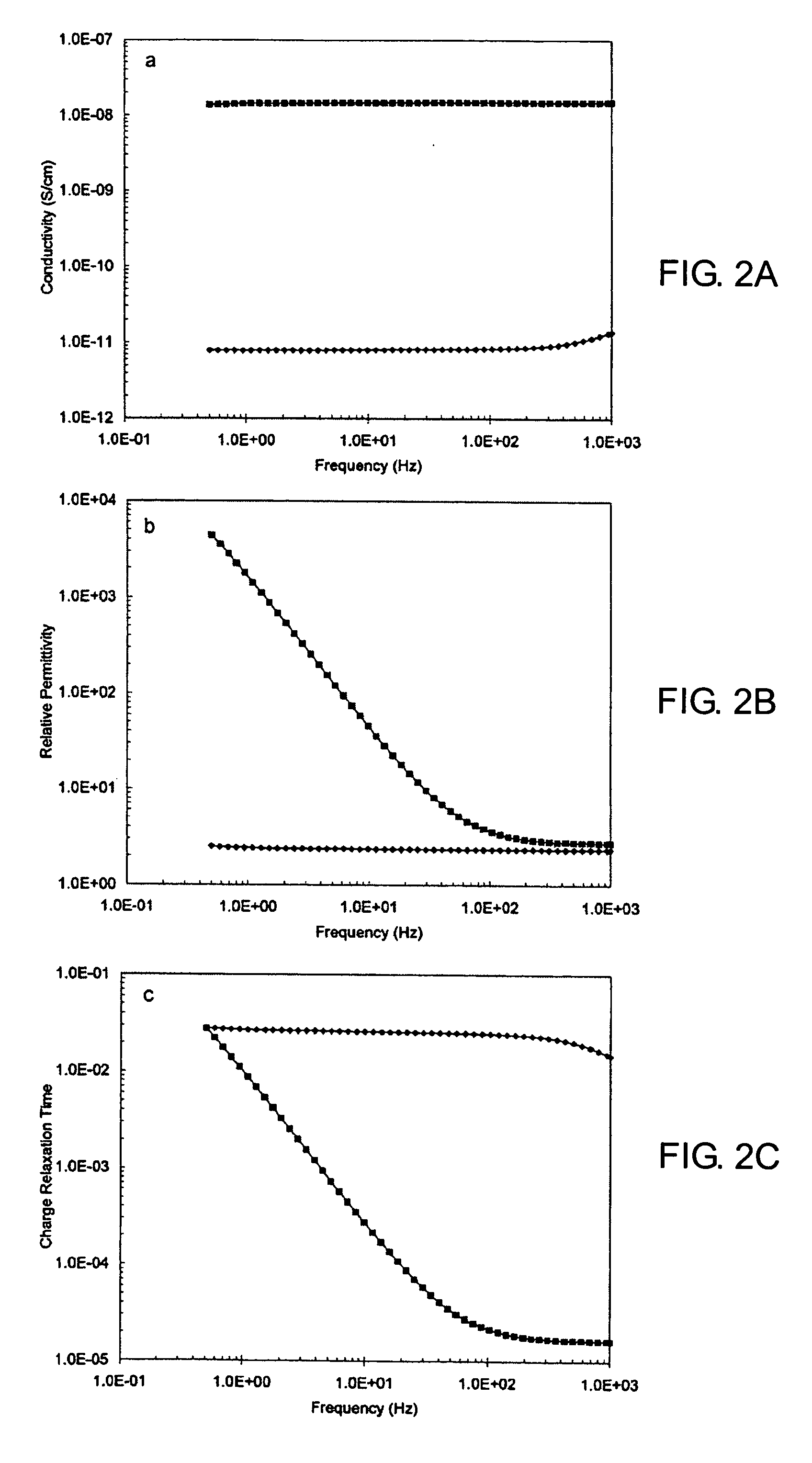Electrohydrodynamic microfluidic mixer using transverse electric field
a microfluidic mixer and electrohydrodynamic technology, applied in the direction of fluid pressure measurement, liquid/fluent solid measurement, peptide measurement, etc., can solve the problem of prohibitively long channels, difficult to achieve diffusive mixing in microchannels, and difficult to achieve mixing in microchannels. problem, to achieve the effect of reducing the cost of manufacturing, the approach is complicated and the effect of increasing the complexity of the microfluidic mixer
- Summary
- Abstract
- Description
- Claims
- Application Information
AI Technical Summary
Problems solved by technology
Method used
Image
Examples
Embodiment Construction
[0024] In the following description, we will explain details about an active microfluidic mixer based on both an electric force generated in presence of an applied transverse electric field and nonuniformities in predetermined electrical properties of the fluids. In particular, two fluids with identical mechanical properties and different conductivity and permittivity are used in the mixer. In the absence of an electric field, mixing is very poor and the two fluids meet only in the mid-plane at a flat interface. When the electrodes are energized by the applied field, the field creates a strong force substantially perpendicular (normal) to the interface causing the two fluids to intermingle and therefore enhancing mixing between the two fluids. In the embodiments described herein where the fluids flowed at a volume flow rate of 0.26 ml / s (corresponding to a Reynolds number less than 0.02) in a microchannel of cross-section 250 .mu.m.times.250 .mu.m, the fluids were mixed quasi-instan...
PUM
| Property | Measurement | Unit |
|---|---|---|
| width | aaaaa | aaaaa |
| volume flow rate | aaaaa | aaaaa |
| thick | aaaaa | aaaaa |
Abstract
Description
Claims
Application Information
 Login to View More
Login to View More - R&D
- Intellectual Property
- Life Sciences
- Materials
- Tech Scout
- Unparalleled Data Quality
- Higher Quality Content
- 60% Fewer Hallucinations
Browse by: Latest US Patents, China's latest patents, Technical Efficacy Thesaurus, Application Domain, Technology Topic, Popular Technical Reports.
© 2025 PatSnap. All rights reserved.Legal|Privacy policy|Modern Slavery Act Transparency Statement|Sitemap|About US| Contact US: help@patsnap.com



